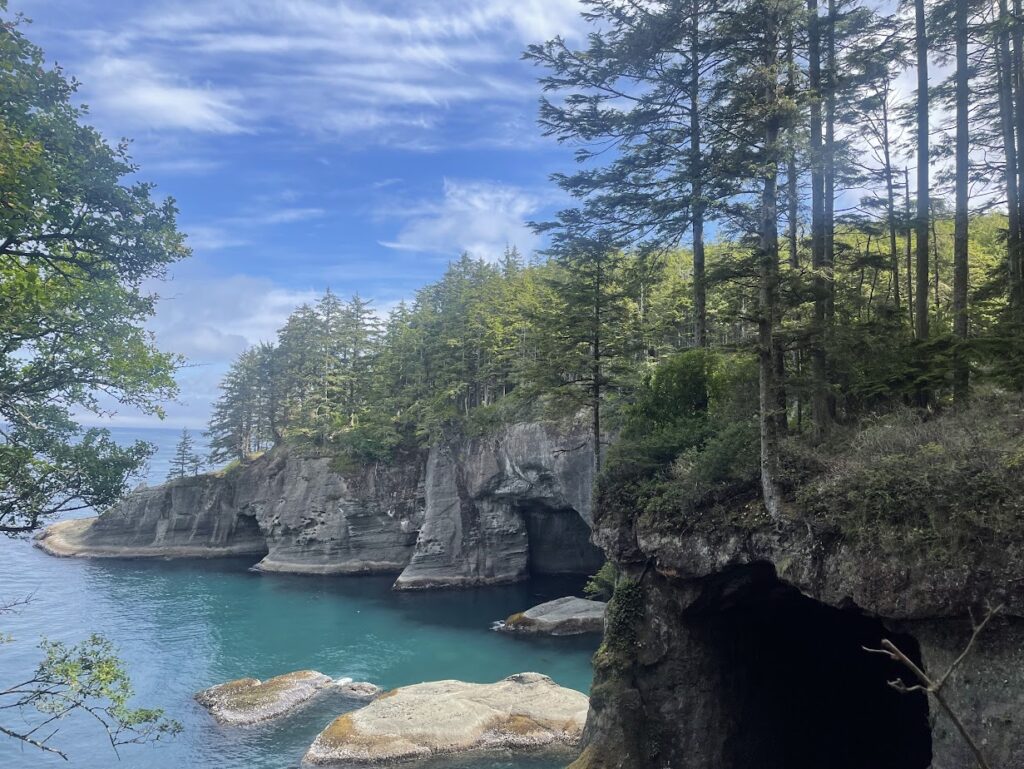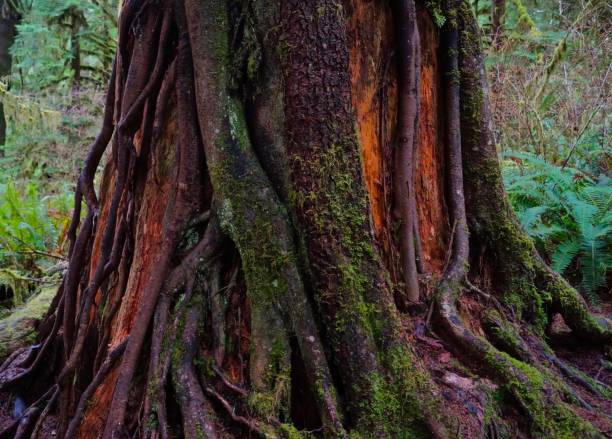Cape Flattery
Heritage of the Makah Tribe
Cape Flattery is a day trip from the Dungeness Valley Inn. When you reach Lake Crescent, you are just halfway. Highway 112 ends and the Cape Flattery Scenic Byway begins. Continue west to Cape Flattery- the most northwestern point in the contiguous U.S. Follow the cedar plank boardwalk trail to view the Pacific Ocean and the Strait of Juan de Fuca. On clear days, you can see Tatoosh Island and its lighthouse. The area has sea caves with sea otters, cormorants, eagles, and falcons.
Cape Flattery is located on the tip of the Olympic Peninsula in Washington State. It is known for its stunning coastal views and is part of the Makah Reservation. The Makah Museum, which highlights the rich cultural heritage of the Makah Tribe, is situated nearby. If you are traveling from the Dungeness Valley Inn, which is located in Sequim, Washington, Cape Flattery is approximately 90 miles away. It would take around 20 minutes to reach the Makah Museum from Cape Flattery by car.


Ammenities
Cape Flattery offers a range of attractions and activities for visitors to enjoy. Here is a description of what you can expect when visiting Cape Flattery.
1. Scenic Beauty
Cape Flattery is renowned for its breathtaking natural beauty. The cape features rugged cliffs, dramatic sea stacks, and stunning ocean vistas. The combination of the rocky coastline, lush forests, and crashing waves creates a picturesque and awe-inspiring landscape.
2. Makah Reservation
Cape Flattery is located within the Makah Reservation, which is home to the Makah Tribe. Visitors have the opportunity to learn about the tribe’s rich cultural heritage and history through the nearby Makah Museum. The museum highlights artifacts, exhibits, and artwork that provide insights into the Makah people’s traditions and way of life.
3. Cultural Significance
Cape Flattery holds significant cultural value for the Makah Tribe. Visitors can gain a deeper appreciation for the tribe’s connection to the land and the ocean by learning about their traditional fishing practices and the importance of the sea to their way of life.
Photography and Nature Exploration
Cape Flattery offers photographers and nature enthusiasts a wealth of opportunities. From capturing stunning sunsets and unique rock formations to exploring tide pools teeming with marine life, there are countless moments to document and appreciate in this beautiful coastal setting.
It’s important to note that Cape Flattery is a protected area, and visitors are encouraged to practice Leave No Trace principles, respect the environment, and follow any guidelines or regulations provided by the Makah Tribe or park authorities.
1. Cape Flattery Trail
A well-maintained trail leads visitors from the parking area to the cape’s viewpoints. The trail is short, about a mile long, and winds through the forest, offering glimpses of the surrounding wildlife and plant life. It is a moderate hike with some inclines and uneven terrain, but the stunning views along the way make it well worth the effort.
2. Viewpoints and Wildlife
Once you reach the end of the Cape Flattery Trail, you’ll be rewarded with several lookout points. These viewpoints offer sweeping vistas of the Pacific Ocean, rugged cliffs, sea stacks, and the nearby Tatoosh Island. It’s an excellent spot for birdwatching, as you may see various seabirds, including puffins, as well as other marine wildlife such as seals and whales.
2. Tatoosh Island
Tatoosh Island, located just off the coast of Cape Flattery, can be seen from the viewpoints. The island is an important nesting site for seabirds, including the tufted puffin. While visitors cannot access the island, observing it from Cape Flattery provides a unique opportunity to witness the abundant birdlife.
